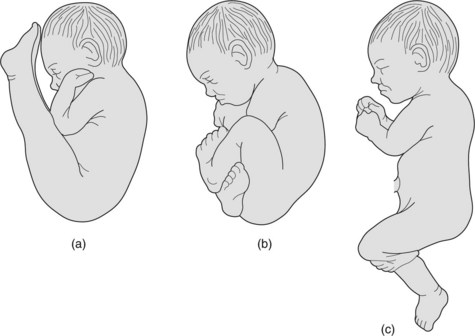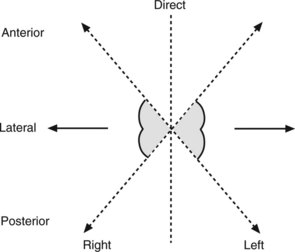Chapter 20 Breech
DIAGNOSIS
Vaginal examination
ANTENATAL ASSESSMENT
Box 20.1 External cephalic version (ECV)
Post procedure
SPONTANEOUS BREECH DELIVERY
The widest part of the pelvic brim is usually the transverse diameter whereas the anteroposterior diameter is the widest part of the pelvic outlet. In spontaneous delivery the three fetal diameters, the bitrochanteric, bisacromial and anteroposterior of the fetal head, enter in sequence through the pelvic brim in the transverse or oblique diameter and are then guided by the levator ani muscles to fit the anteroposterior diameter of the outlet (see Figure 20.3).
The breech enters the pelvis with the trochanters aligned in the transverse or oblique diameter of the brim. Rotation takes place so the bitrochanteric diameter delivers through the anteroposterior diameter of the outlet. Once delivered, the breech rotates to the sacroanterior position so that the shoulders enter in the transverse diameter of the brim. Internal rotation allows the delivery of the shoulders in the anteroposterior position of the outlet and the passage of the head through the brim in the occipitolateral position. Following delivery of the shoulders (anterior shoulder delivers first) aided by lateral flexion of the trunk, the sacrum again rotates anteriorly so the posteroanterior diameter of the head (with the occiput beneath the symphysis pubis) delivers by flexion in the anteroposterior diameter of the pelvis. Figure 20.2 shows the possible positions of breech presentation.
Stay updated, free articles. Join our Telegram channel

Full access? Get Clinical Tree





